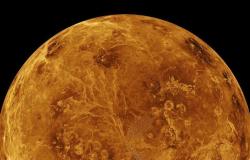A multidisciplinary scientific team has carried out a pioneering experiment in the measurement of nuclear reactions with the use of nanomaterials that has allowed to reveal new perspectives in the origin of the heaviest elements of the universe.
The Research Group has been composed of researchers from the University of Surrey, the University of York, the National Center of Canada for the acceleration of Trumf particles and the Institute of Materials Science in Seville (ICMS), a mixed center of the Higher Council for Scientific Research (CSIC) and the University of Seville (US).
The study has been a pioneer in the use of nanomaterials to study nuclear reactions with radioactive nuclei such as those produced in the collision of neutron stars, a reactions that give rise to the formation of heavy elements in the process called ‘nucleosynthesis-r’.
As reported on Thursday the CSIC in a statement, the elements of the universe are the result of extreme conditions and reproduce them is an obstacle to the progress towards a complete understanding of the training process.
-The experiment was possible thanks to the use of novels ‘White Helium’, a noble gas, not reactive or solid. The researchers developed a nanomaterial innovative that incorporates helium in ultrafine silicon films to form billions of helium microscopic bubbles.
These targets concentrate more helium in a space less than any traditional method, which increases the probability that a nucleus of the so-called ‘Strontium-94’ entree to merge with the helium.
It is believed that strontium-helio fusion reactions, produced experimentally, occur inside fast winds expelled by neutron stars in fusion or supernovae (massive stars in explosion), which provides researchers with a deep knowledge of the reaction conditions.
“This study opens the doors to new opportunities for measuring similar reactions in the future, contributing to a clearer understanding of the formation of heavy elements and the role of neutron stars mergers,” said the researcher at the Institute of Materials Science in Seville (ICMS), Asunción Fernández.






